Early Palm Beach visitors lived the wildlife on the Jungle Trail
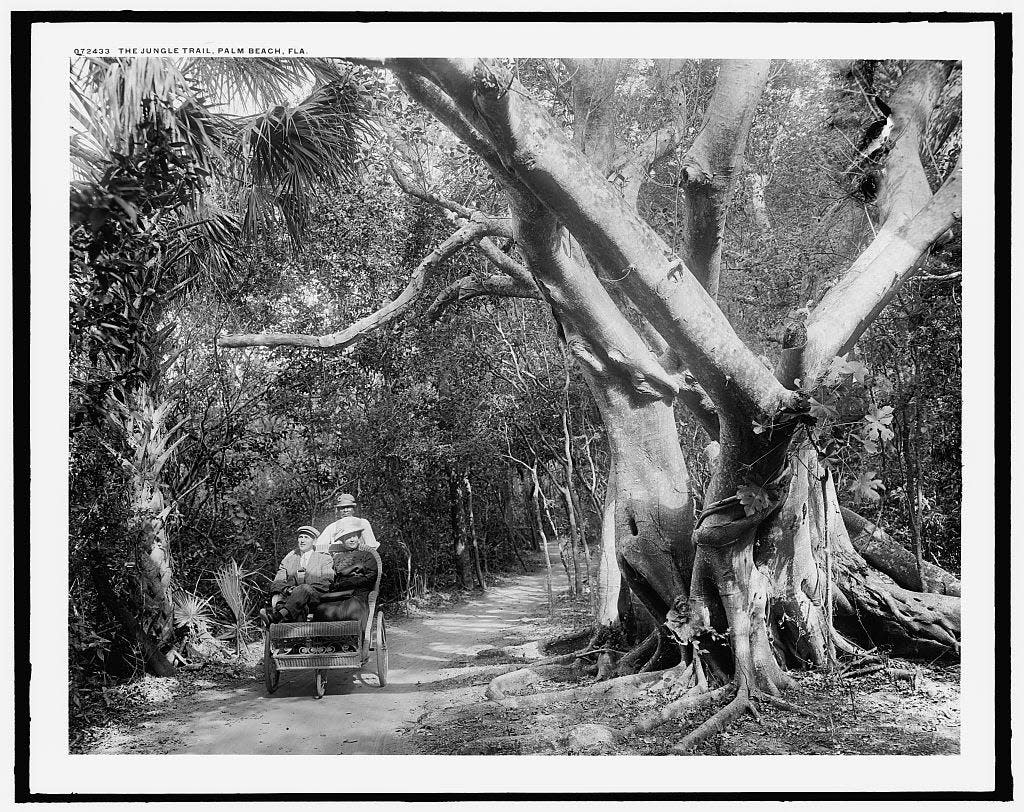
Though they took much pleasure in tea dances, fine dining, golfing and other activities, affluent Gilded Age visitors to Palm Beach also relished taking a proverbial walk on the wild side.
Sure, the pristine grounds of Henry Flagler’s two 1890s-built resort hotels — one's now gone and the other is The Breakers — boasted myriad amenities, but why not temporarily ditch the highlife for wildlife by taking a ride in the “jungle”?
About a mile south of the hotels, a winding path called the Jungle Trail took visitors through Palm Beach’s virgin landscape — a teeming and often tangled profusion of subtropical foliage.
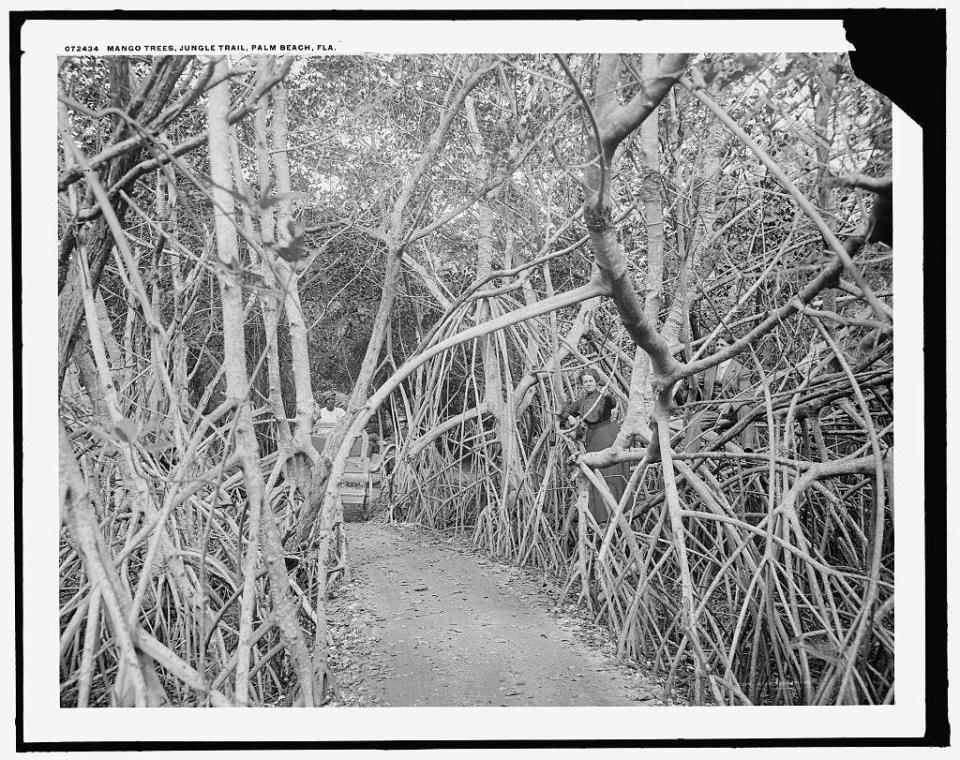
Forget that this pathway would later be revamped into a luxury retail drag called Worth Avenue. Before that glamorous street started to take shape in the early 1920s, the Jungle Trail prevailed, complete with an alligator-wrestling concession at one end.
In fact, most of the island still was undeveloped then and the Jungle Trail offered a manmade pathway through a small portion of it, an excursion that was a world away from the resort swath Flagler cleared and built near what is today Royal Poinciana Way.
More:Memory Lane: Dog proved to be Henry Flagler's best friend in Palm Beach
To get to the Jungle Trail from the resort hotels served by Flagler’s railroad, guests took a then-popular conveyance on the island: wheeled wicker chairs set in motion by an attached rear bicycle rig pedaled by a hotel driver.
At night, lanterned wheeled chairs often “darted to and fro like fireflies” as couples flitted to fancy affairs at Flagler’s hotels, but by day, they often were destined for the Jungle Trail, “a piquant contrast of wild nature,” a 1912 observer noted.
Hammon's tract of land
The trail wound through a tract of land owned by Palm Beach pioneer Hiram F. Hammon (Hammon Avenue is named after him).
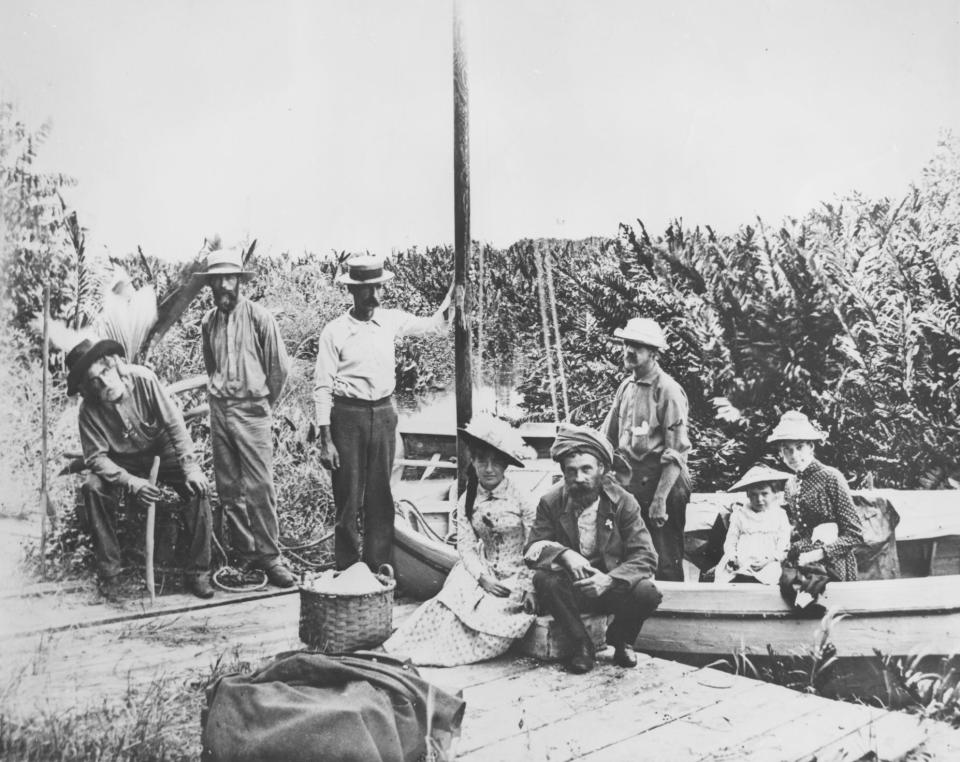
The Ohio native, who headed south with hopes the warmer climate would alleviate his rheumatism, operated a boat service out of Titusville in the 1860s.
He then filed the first homestead claim in what would later be named Palm Beach because after all, he “was loud in his praise” for the area, early settlers said, and why not take advantage of the Homestead Act that Congress had passed in 1862? The act enabled any U.S. citizen to claim up to 160 acres of surveyed government land as long as the person agreed to live on it and improve it for five years.
Hammon’s homestead actually amounted to 169.2 acres, according to Florida homestead records, and it included present-day Worth Avenue and Hammon Avenue and stretched the entire width of the island, from the ocean to the lake.
More:Memory Lane: Movie star's son had thirst for adventure
He settled on the land in 1873 and built a thatched palmetto shack he shared with friend and fellow pioneer William Lanehart, who took an adjoining homestead. With the then-handful of other area pioneers, they feasted that Christmas on roast possum, sweet potatoes and prickly pear pie.
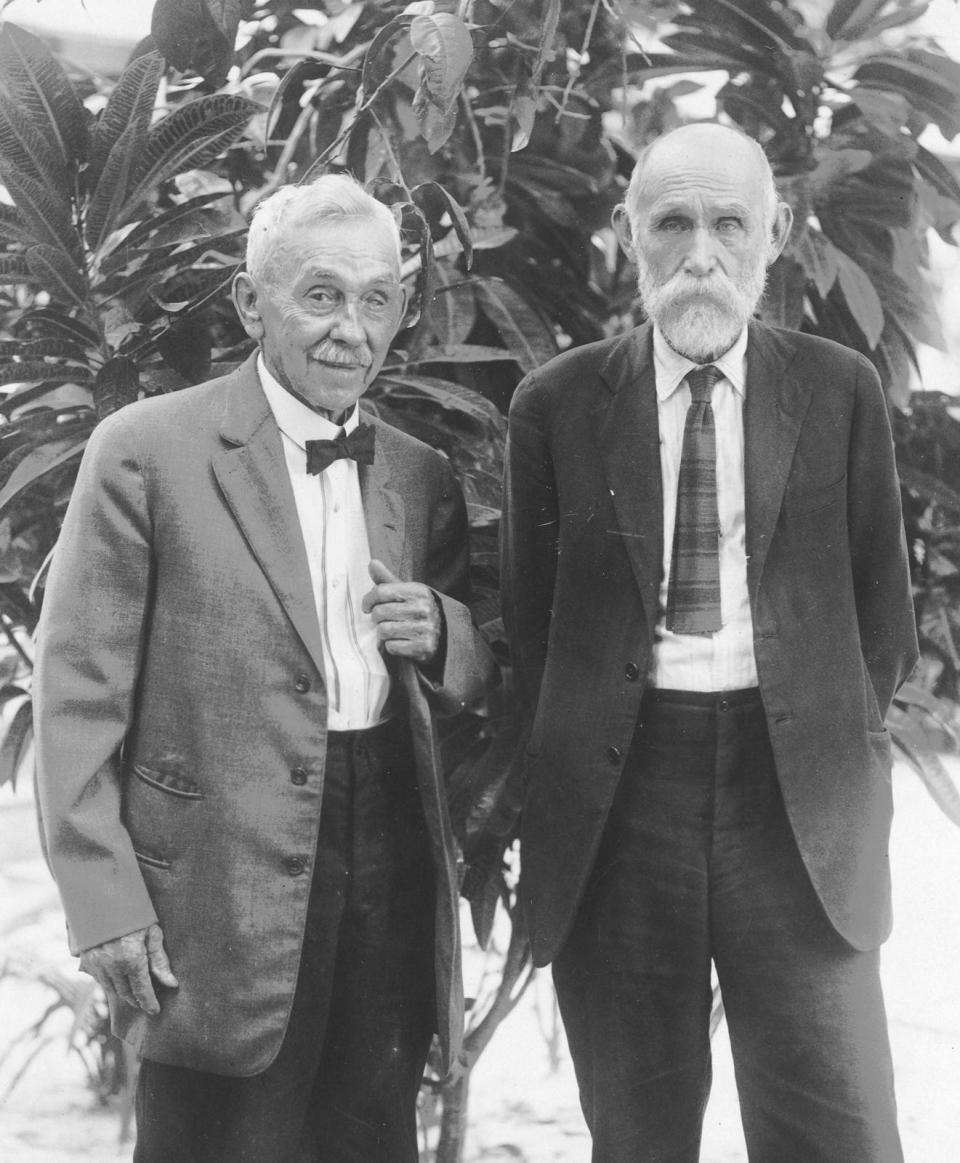
Hammon became well known in Palm Beach.
For instance, when a Spanish barque, the Providencia, wrecked on the local beach in 1878, he and Lanehart were the first on the scene.
They salvaged the cargo of 20,000 coconuts (among other things), which settlers then planted. Within a decade, the area flourished with palm trees, inspiring the name Palm Beach when a new post office was established in 1887.
Read more:A walk through time: The past is present in historical Palm Beach buildings and landmarks
Hammon, known as Harley among relatives, was a charter member of the Lake Worth Pioneers’ Association, which was established in 1894, and served for years as its president. A donation he made to the association enabled the purchase of land in West Palm Beach for a pioneer cemetery.
'Uncle Harley'
After Flagler extended his railroad to the area and built his two Palm Beach hotels in 1894 and 1896, local pioneers who’d preceded him realized the uptick in well-to-do tourists in the area was a “logical source” of income, according to Hammon’s great grandniece.
In a 1940 article she wrote for the Florida Historical Quarterly, Marian R. Trumbull wrote that “Uncle Harley got the idea that a portion of his land, being of very heavy jungle growth, would be an attraction to tourists. … He cut trails just wide enough for the … wheel chairs.”
A 1907 map of Palm Beach — an oft-cited historical resource originally drafted by the Currie Investment Co. —shows the Jungle Trail extended east to west where Worth Avenue is today. But it wasn’t a straight line like the Avenue is today.
Instead, the Jungle Trail extended gradually east to west in a loopy north-south zig-zag so wheel-chair riders moved through it as if following a giant piece of ribbon candy from one end to the other.
At the east end of the trail, an unpaved pathway headed north for about a mile. It was identified on the Currie map as County Road/Jungle Trail.
Alligator Joe
Where the Jungle Trail met its west end near the lakefront (the western-most point of today’s Worth Avenue), an entrepreneur/alligator wrestler named Warren “Alligator Joe” Frazee had set up a saurian compound where he wrestled the giant reptiles for show every day.
His wasn’t the only concession on the Jungle Trail.
More:Palm Beach history: Brawny entrepreneur Alligator Joe entertained tourists with wildlife antics
“One of the new attractions this season is the Banyan Tree Garden, built entirely inside of the (giant) banyan tree on the Jungle Trail,” the Palm Beach Daily News reported in 1909. “Here the visitor may sip orange juice, grapefruit juice or coconut milk and partake in homemade cakes and dainties. It is becoming quite a fad to ride out to the pleasant little garden, have light refreshments and bring home a box of their delicious homemade candy.”
For years, Hammon, who died in 1922, wasn’t interested in selling his Palm Beach land — or at least he wasn’t in a rush to do so. He had complete faith that it would keep going up in value, friends said. He was right.
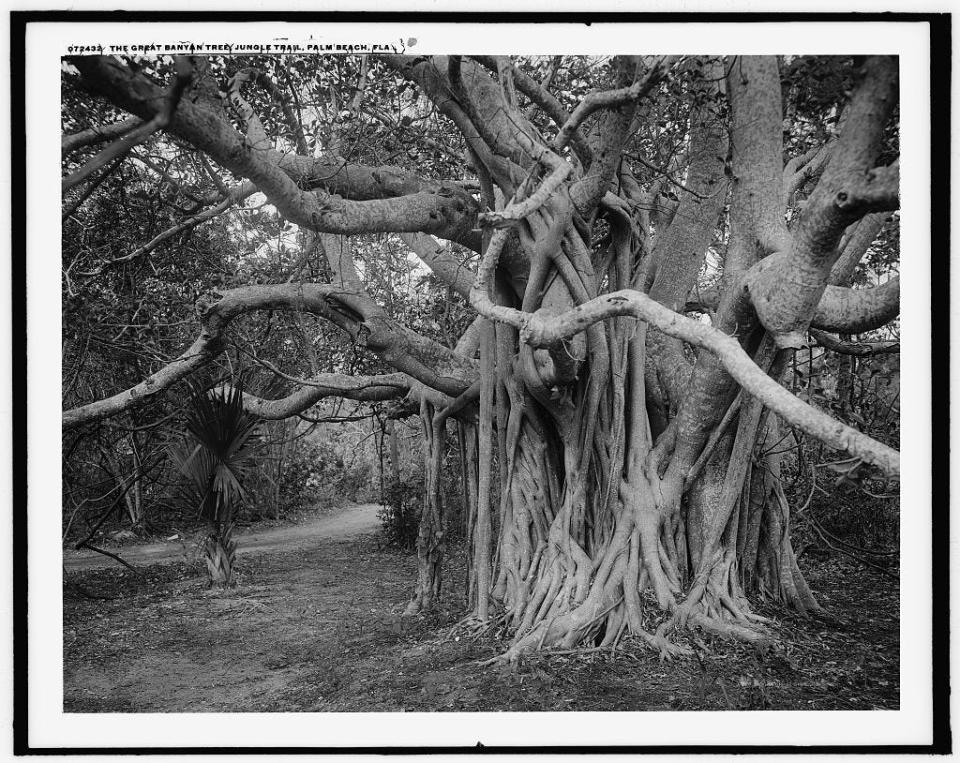
By 1918, he began selling chunks of his property. That included the Jungle Trail land, which he sold to sewing-machine-fortune heir Paris Singer, who, with architect Addison Mizner, planned to open a convalescent center for returning World War I soldiers; instead, the facility opened in 1919 as the Everglades Club.
More:Memory Lane: Ernest Walter Histed photographed the rich and famous in Palm Beach, around the world
In 1921, Hammon sold the property that would become the site of The Colony hotel to William Waller Jr., and his wife, Lucia. Months after buying the land from Hammon, the Wallers built a large Spanish villa named Casa Manana, which now houses The Colony’s villas at 152 Hammon Ave.
Sales back then from land that were originally part of Hammon’s homestead claim totaled more than $1 million, according to the Historical Society of Palm Beach County.
Hammon owned other property before his 1922 death, including a farm in what was named Hammonville — located west of Pompano in today’s Broward County — before later being renamed Margate.
This article originally appeared on Palm Beach Daily News: Worth Avenue was once the site of Palm Beach's Jungle Trail

